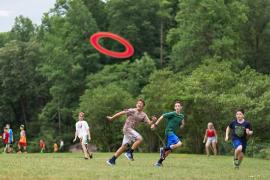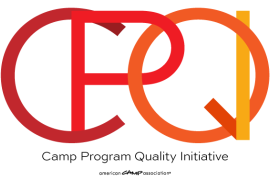We're here to remind you just what CampCounts is, what was unique about this year's survey efforts, and some of the key takeaways we're seeing in the data. Still, don't miss the full CampCounts 2021 report.
About CampCounts
CampCounts is an annual survey conducted by ACA's Research Team for the purpose of supporting camp professionals in their operational decision-making, as well as supporting ACA's advocacy efforts. Both ACA members and non-members are invited to participate, and responses are anonymous, and findings are reported in aggregate by the following segments: program types offered (day, overnight, or other alternative programming), primary program type (50% or more day camp programming, overnight camp programming, or other alternative programming), and camp owner/sponsor (independent nonprofit, for-profit, municipal/government, nonprofit affiliated with another entity).
This Year's Survey
CampCounts 2021 was launched on October 11, 2021, and the survey closed on October 29, 2021. The overall response rate was low (7.6%) and such, results should be interpreted with caution. Of the camps that completed the survey, 31% were primarily day camps (that is, 50% or more of their camp programming was day camp programming), 54% were primarily overnight camps, and 15% primarily offered some other alternative programming (e.g., rental groups). The largest camp owner/sponsor group was nonprofit camps affiliated with another entity (56% of the sample), followed by independent nonprofit camps (24%), for-profit camps (19%), and finally municipal/government camps (1%). Nearly half of the sample (44%) reported a typical operating budget of $1–$5 million, followed by $500,000 – $1 million (26%), $200,000 – $500,000 (18%), $5 million or more (7%), and lastly, $200,000 or less (5%).
In addition to the standard survey questions carried forward from previous business and industry surveys, CampCounts 2021 included unique questions intended to capture some of the ongoing effects of the COVID-19 pandemic on camps in the US, such as staffing impacts and supply chain challenges. Additionally, some questions asked camps to report information from 2021 as well as a more “typical” (pre-pandemic) year, with the hopes of gleaning more representative benchmark data. Results are compared to the 2017 ACA Business Survey (now incorporated into CampCounts) and the CampCounts 2020 survey where possible.
Some Key Takeaways
Camps are bouncing back . . .
Although overnight camp has yet to return to pre-pandemic levels, day camp program offerings have surpassed what camps used to offer in a typical year. More specifically, while nearly three-fourths (71%) of the camps responding to the survey reported offering at least some amount of overnight camp programming in a typical year, only one-third (66%) reported actually offering at least some amount of overnight camp in 2021. Meanwhile, although only 54% reported offering at least some amount of day camp programming in a typical year, 56% reported actually offering at least some amount of day camp in 2021. But camp programs aren't the only thing to get excited about — camp participants are back too! Although day camps, on average, did not reach their pre-pandemic number of unique campers served, they still saw a 96% increase in the average number of unique campers served compared to 2020. Meanwhile, overnight camps surpassed pre-pandemic averages for unique campers served, with a 64% increase in unique campers served, on average, compared to 2020 and a 22% increase in unique campers served, on average, compared to 2019.
. . . and camps are getting more expensive.
Overall, three-fourths (75%) of the camps responding to this survey indicated that their camp's total expenses in 2021 increased (slightly or significantly) from 2020. This might help explain the fact that average daily per-person fees for both day and overnight camp programs saw a sharp increase in 2021 compared to previous years, regardless of a camp's primary program type. In fact, when we asked camps to identify the primary reason for fee increases from 2019 to 2020, the most commonly reported response was “increased cost of inputs (e.g., COVID-related supplies or other program supplies)” followed by “to cover increased cost of living.” Although this question did not remain on CampCounts 2021, given the ongoing impacts of the COVID-19 pandemic throughout 2021 along with the increase cost of living from 2020 to 2021, it stands to reason that these factors remained impactful for camps when determining their 2021 daily per-person fees.
However, financially, there is hope for both camps and campers.
While just over one-third (34%) of all camps responding to this survey reported that the level of philanthropic giving in 2021 was about the same as the level of philanthropic giving in 2020, just over one-third (35%) reported that the level of philanthropic giving was slightly more or significantly more than the level of philanthropic giving in 2020. And when asked to describe the financial stability of their camp, the most common response was “sustainable” (56% of camps), followed by very “sustainable” (36% of camps). What's more, the total dollar value of means-tested financial assistance awarded to campers in 2021 was higher, on average, for both day and overnight camps compared to 2020, regardless of programs offered, primary programs offered, or camp owner/sponsor
But staffing remains a pressing challenge.
While not yet back to pre-pandemic levels, the number of international summer camp staff members rose substantially in 2021, with 9% of day camps reporting having at least one international staff member (up from 5% in 2020), and 47% of overnight camps reporting having at least one international staff member (up from 13% in 2020). Still, 33% of camps offering some amount of day camp programming and 43% of camps offering some amount of overnight camp programming reported that they were not able to meet their staffing needs because there were not enough qualified staffers. Furthermore, when asked about early staff resignations, 56% of the camps responding to this survey that offered some amount of day camp programming reported having day camp staff resign in advance of their contracted end date, and 71% of the camps that offered some amount of overnight camp programming reported having overnight camp staff resign in advance of their contracted end date.
Want to take a deeper dive into the findings from CampCounts 2021? Be sure to take a look at the infographic and review the detailed results in the full report.
The views and opinions expressed by contributors are their own and do not necessarily reflect the views of the American Camp Association or ACA employees.



